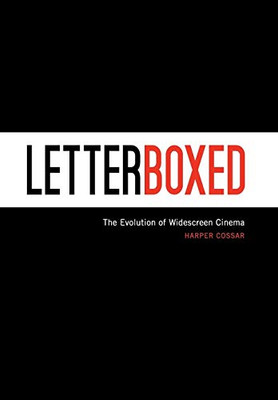When widescreen technology was introduced to filmmaking in 1953, it revolutionized the visual framework and aesthetic qualities of cinema. Many modern moviegoers are already familiar with the widescreen revolution, which recently made its way from the big screen to the home screen. What remains hidden, however, is the rich history of this technology and its origins. Letterboxed: The Evolution of Widescreen Cinema tracks the development of widescreen cinema from the early twentieth century to contemporary technologies such as video games and IMAX. Examining early filmmakers such as buster Keaton and D.W. Griffith and genre pioneers like Nicholas Ray and Douglas Sirk, Harper Cossar explains how directors use wider aspect ratios to enhance their creative visions. Whereas previous analyses of widescreen cinema have pointed out the format capacity to increase an audience's level of engagement during viewing, or have heralded it as an end to the era of montage by analyzing a few canonical films. Cossar's new assessment of widescreen technology offers deeper insights into the aesthetic implications of the format. Letterboxed examines the impact of widescreen cinema by broadening the scope of films included in the discussion and by focusing specifically on classical Hollywood genre films directed by recognized auteurs. By examining the differences between widescreen format and its predecessor, the Academy ration, Cossar distinguishes between the physical and stylistic ruptures prompted by widescreen technology. Not only did widescreen offer an alternative to the traditional aspect ratio of the screen, but it also introduced new methods of working within cinematic tropes to utilize space and action more effectively. Cossar examines films throughout the history of cinema, uncovering the trends and changes that result from the use of widescreen, and also discusses the flexibility of widescreen methods as applied in various film genres. He reviews existing scholarship and offers his own insights about the origins of this technology, its impact, and its more recent uses in both live-action and animated film.
- | Author: Harper Cossar
- | Publisher: University Press of Kentucky
- | Publication Date: December 13, 2010
- | Number of Pages: 352 pages
- | Language: English
- | Binding: Hardcover
- | ISBN-10: 0813126517
- | ISBN-13: 9780813126517






